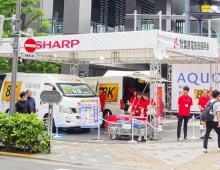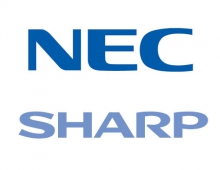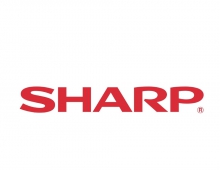
Sharp and Nichia Enter into LED and Laser Diode Patent Cross-Licensing Agreement
Sharp and Nichia have entered
LEDs feature long service life and low power consumption, and are increasingly expected to be the strongest candidate for the next generation of lighting devices. At present, LEDs have been adopted mainly for use in backlights for mobile phones and PDAs, but in the future, they are expected to gain acceptance not only for general illumination applications, but also for use in large numbers in the backlights of LCD TVs and for automotive lighting.
At the same time, laser diodes have long been the key device used in recording and playback of optical disks such as CDs and DVDs. Today, as HDTV images become increasingly familiar, demand is growing rapidly for blue-violet laser diodes as indispensable devices in recording and playback of terrestrial digital broadcasts, and for Blu-ray Disc recorders and players.
Sharp launched development of LEDs in 1968 and began mass production in 1970. In addition, Sharp was the first in the world to begin mass production of infrared laser diodes for CDs in 1982, and in February of this year, initiated mass production of 250-mW, pulsed-output, high-power blue-violet laser diodes, one of the highest levels in the industry.
By working toward development of a vertically integrated business model based on these two devices, including LED lighting and Blu-ray Disc recorders, Sharp is aiming to create uniqueproducts in the future that feature both devices at their core.
By entering into this cross-licensing agreement, Sharp and Nichia will be aiming to create even higher-performance LEDs and laser diodes, enabling the two companies to respond to rapidly expanding market demand.
LEDs feature long service life and low power consumption, and are increasingly expected to be the strongest candidate for the next generation of lighting devices. At present, LEDs have been adopted mainly for use in backlights for mobile phones and PDAs, but in the future, they are expected to gain acceptance not only for general illumination applications, but also for use in large numbers in the backlights of LCD TVs and for automotive lighting.
At the same time, laser diodes have long been the key device used in recording and playback of optical disks such as CDs and DVDs. Today, as HDTV images become increasingly familiar, demand is growing rapidly for blue-violet laser diodes as indispensable devices in recording and playback of terrestrial digital broadcasts, and for Blu-ray Disc recorders and players.
Sharp launched development of LEDs in 1968 and began mass production in 1970. In addition, Sharp was the first in the world to begin mass production of infrared laser diodes for CDs in 1982, and in February of this year, initiated mass production of 250-mW, pulsed-output, high-power blue-violet laser diodes, one of the highest levels in the industry.
By working toward development of a vertically integrated business model based on these two devices, including LED lighting and Blu-ray Disc recorders, Sharp is aiming to create uniqueproducts in the future that feature both devices at their core.
By entering into this cross-licensing agreement, Sharp and Nichia will be aiming to create even higher-performance LEDs and laser diodes, enabling the two companies to respond to rapidly expanding market demand.





















